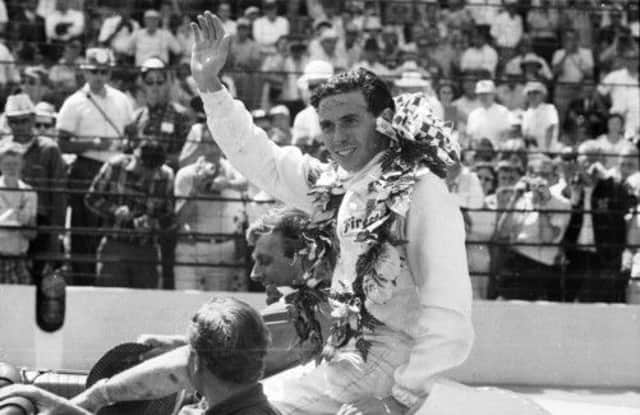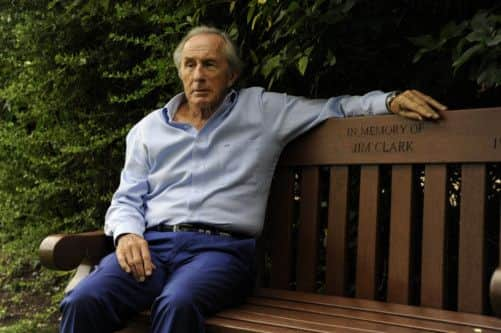Stewart and Franchitti back Jim Clark museum plan


The Jim Clark Room, which is currently set up in the Berwickshire town of Duns, close to where Clark spent most of his life, houses a selection of memorabilia from the late driver’s career, but it is small and becoming overcrowded.
Now the Jim Clark Trust is putting together a bid to build a new, expanded museum to house more of the cars Clark drove, trophies he won and other memorabilia from his acing career under one roof.
Advertisement
Hide AdThe Trust, which has drawn up a five-year plan with a 2018 completion date, is being supported by Sir Jackie, as honorary president, and Franchitti, the founding member of a new Patrons Club.


Speaking at the Goodwood Revival classic car festival – which formed part of the 50th anniversary celebrations of Clark’s first world championship in 1963 and included a parade of more than 30 cars raced by Clark – his nephew, Ian Calder, said: “We are touched by all the support from those who Jim inspired many years ago.
“Our aim is to keep his legacy alive with the new museum in Duns to inspire the next generation with a celebration of his life and motor sport.”
Scottish Borders Council is also playing its part by providing over £500,000 capital funding for the new museum.
The Jim Clark Room has attracted more than 300,000 visitors from across the world since it opened 40 years ago.
Clark died in a race at Hockenheim in Germany in 1968, having just turned 32.
Advertisement
Hide Ad“Jim raced simply because he enjoyed it,” said the driver’s cousin, Doug Niven.
“Although a shy and private individual he became a hero to millions and known the world over. People were attracted to his modesty, his friendliness and to the integrity with which he conducted himself. Somehow and effortlessly, just like his driving, he became an icon for his sport and for his country.
Advertisement
Hide Ad“The new museum will be about inspiring future generations with a modern and vibrant celebration of Jim Clark’s incredible career and impact on motor sport around the world, including trophies, pictures, film footage and some of the cars in which he raced.”
Stewart and Franchitti were joined at Goodwood by another motor racing legend, Sir Stirling Moss, Scottish Olympic cycling gold medallist Sir Chris Hoy, broadcaster Chris Evans and television chef James Martin.
Profile: Boy from Fife who went on to dominate world of Formula One
Born in Kilmany, Fife, in 1936, Jim Clark was the Formula One champion considered by some to be the finest driver of all time.
He was raised on a farm in the Berwickshire hills, a world away from racing, and attended Loretto School in Edinburgh.
Early interests lay in cricket, but he later bought a Sunbeam Talbot. In 1956 he began competing in local rallies and within four years he was racing for Lotus in the 1960 season.
Advertisement
Hide AdHe won the world championship twice – first in 1963, then in 1965 – and secured the top podium slot at 25 Grand Prix races. He was also the first Briton to win the gruelling Indianapolis race in America.
Clark’s tally of 25 victories was a record at the time and has only since been surpassed by a handful of other drivers – and none in as few races. His 25 wins came in just 72 starts, a win ratio surpassed only by Alberto Ascari and Juan Manuel Fangio.
Advertisement
Hide AdOnly Sebsatian Vettel, Michael Schumacher and Ayrton Senna have ever surpassed Clark’s tally of 33 pole positions in Formula One.
He was involved in several spectacular accidents during his career, but had never suffered serious injury until 1968.
He was racing in a Formula Two race at a wet Hockenheim on 7 April during a break in the Formula One season, when his Lotus left the track, somersaulted through the air and collided with a tree, killing Clark, then just 32. He was one of more than 100 drivers killed in action between 1958 and 1968, a treacherous time for the sport.
Last year, BBC Sport named Clark No3 in a profile of the greatest ever drivers, after Fangio and Senna at No1.